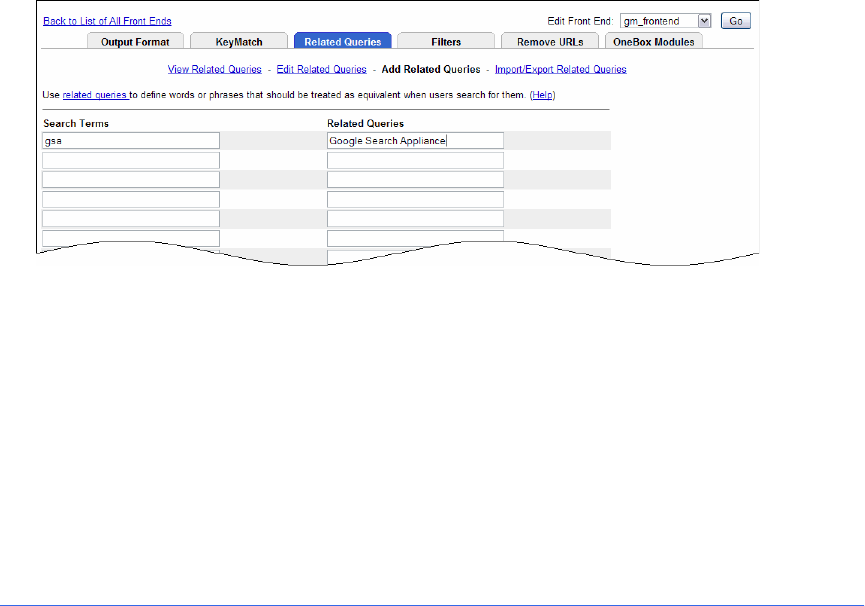Manual
Table Of Contents
- Getting the Most from Your Google Search Appliance
- Contents
- Introduction
- Planning
- Setting Up
- Crawling and Indexing
- Search Experience
- Using Features to Enhance the Search Experience
- Using Front Ends
- Forcing Specific Documents to the Top of Search Results
- Suggesting Alternative Search Terms along with Results
- Grouping Search Results by Topic
- Providing Options for Navigating Search Results
- Displaying Expert Profiles with Search Results
- Providing Real-Time Connectivity to Business Applications
- Integrating Personal Content from Google Apps
- Restricting Search Results
- Controlling Automatic Searching of Synonyms
- Influencing Results Rankings
- Segmenting the Index
- Providing User Results
- Enabling User Alerts
- Displaying Translations of Search Results
- Showing Document Previews in Search Results
- Customizing the User Interface
- Collecting Metrics about User Clicks
- Essentials
- Using the Admin Console
- Using Language Options
- Extending Universal Search
- Monitoring a Search Appliance
- Getting Help
- Quick Reference
- Index

Google Search Appliance: Getting the Most from Your Google Search Appliance Search Experience 36
2. Setting up the related query on the Serving > Front Ends > Related Queries page, shown in the
following figure.
3. Saving the related query.
Learn More about Related Queries
For in-depth information about setting up and using related queries, refer to “Using Related Queries to
Suggest Alternative Searches” in Creating the Search Experience.
Grouping Search Results by Topic
The Google Search Appliance can group search results by topic with its dynamic result clusters feature.
By clicking a result within a group, a user can:
• Refine the original search query
• Get more accurate results than from the original search term alone










